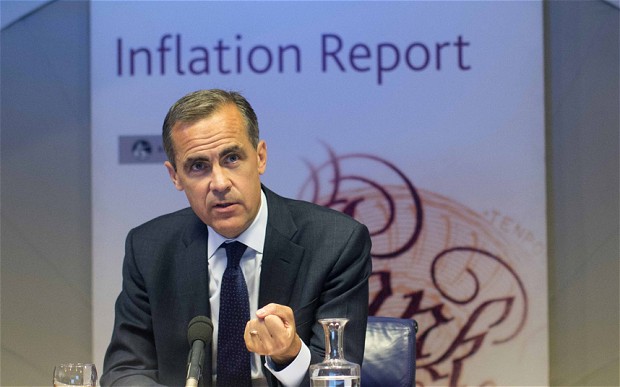Bank of England 2013 Economy Q1
The 2013 Q1 issue of the Bank of England Quarterly Bulletin is published today.
Since the onset of the financial crisis, the MPC has injected substantial stimulus into the economy through purchases of assets as part of its programme known as quantitative easing (QE). These purchases have been carried out via the Asset Purchase Facility (APF), which is owned by the Bank of England and indemnified by Her Majesty’s Treasury (HMT). In November 2012 a process for regular cash transfers between the Bank of England’s Asset Purchase Facility (APF) and Her Majesty’s Treasury (HMT) was established. The profile of cash transfers between the Asset Purchase Facility and Her Majesty’s Treasury explains how the possible size of the transfers varies depending on a number of uncertain factors, including the price at which the assets held by the APF are ultimately sold and the future path of Bank Rate. While the initial transfers are from the APF to HMT, it is likely that they will be offset by payments in the opposite direction in the future. But the ultimate net amount that will be transferred is uncertain, and a wide range of outcomes is possible. An interactive spreadsheet published alongside the article (available on the Bank’s website via the link below) allows users to examine for themselves how the transfers depend on the assumption made.
In April 2013, a new regulatory framework for the UK financial sector will come into force, which will result in the Bank of England gaining significant new responsibilities. Changes to the Bank of England gives an overview of the changes that are happening to the Bank. This includes the creation of the Prudential Regulation Authority (PRA), responsible for the microprudential regulation of individual deposit-takers, insurers and major investment firms; and the Financial Policy Committee (FPC), responsible for identifying, monitoring and taking action to remove or reduce risks to the resilience of the financial system as a whole. The Bank will also take on new responsibilities in relation to financial market infrastructures, including central counterparties. The article summarises these changes in one place, alongside the revised governance processes that are being put in place to ensure that the Bank carries out its new responsibilities effectively and is fully accountable to Parliament and the public.
Two articles consider the importance of different types of corporate indebtedness from the perspective of financial stability. Private equity and financial stability notes the dramatic increase in acquisitions of UK companies by private equity funds in the mid-2000s. Many of these buyouts, especially the larger ones, were highly leveraged and the increased indebtedness of such companies poses a risk to the stability of the financial system – a risk that is compounded by the need for companies to refinance debt maturing over the next few years in an environment of much tighter credit conditions. Meanwhile, the boom and bust in the commercial property market also played a key role in the recent financial crisis in the UK. Commercial property and financial stability explores the behaviour of some of the key players in this market, noting that an increase in the use of leverage and maturity mismatch contributed to both the rise in prices and the subsequent fall. In order to protect financial stability, the new Financial Policy Committee will be alert to the risks posed by such factors, both in the commercial property market, for lending tied to private equity buyouts, and for build-ups of corporate debt more generally.
This edition also introduces The Agents’ company visit scores, which are based on the 5,500 bilateral meetings that Agents have with individual UK firms every year. Another article sets out the rationale for The Bank of England Bank Liabilities Survey, the first results of which will be published on 26 March 2013. Finally, the regular Markets and Operations article reviews developments in financial markets and the Bank’s official operations in the period between the previous Bulletin and 22 February 2012.









